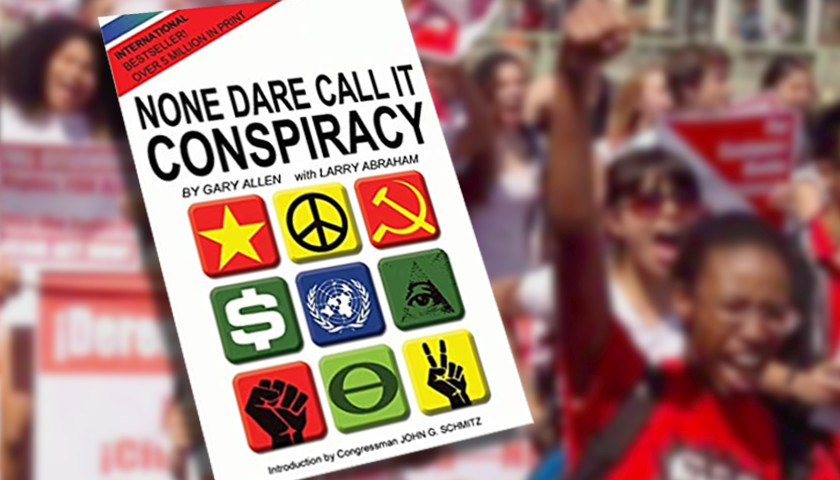by Edward Ring
Does anyone still believe what they read in the New York Times or watch on any major television network news broadcast? Because for millions of Americans, the credibility of those news sources is at an all-time low. The internet hive mind, even in the face of blatant censorship by search engines and social media monopolies, simply offers too many verifiable, alternative facts for establishment media to get away with the kind of lying they do, and yet they persist. Exposed and discredited, they keep on lying, betting that an exhausted populace simply will not verify every single thing they report.
Writing for the American Conservative, Arthur Bloom recently published a critique of American media with the not-so-subtle title, “They Really Are Lying to You.” His opening sentence: “The most effective kind of propaganda is by omission.”
Bloom is probably right, especially when one considers how much the media obsessed, for years, over what ultimately were nonstories – think “Russian collusion” or “Ukrainian impeachment.” And then there are the overblown stories – think “8 million COVID deaths in the United States by this time next year,” and now, “the nation is reeling under an epidemic of systemic racism” that suddenly, so very suddenly, have been urgent crises for, well, forever.
What will be next week’s crisis of the century? And what is really going on behind these blinding lunges from one overwhelming and orchestrated media fixation to the next? What events of greater consequence are being obscured, ignored, or omitted in favor of this coverage?
Media Making News
It doesn’t take a sleuth to watch ABC News anchor David Muir go through his nightly pattern – he curates the same stories, on the same themes, as every other major establishment network – to know that something’s going on. Why is there so much unity? Across the networks, the same facts? The same phrases? And it doesn’t take a numbers genius to realize that Muir and his “experts” have made stunning misuse of statistics to spread agenda-driven panic, first over COVID, and now over “systemic racism.”
America’s mass media aren’t reporting on mass panics and mass protests, they are creating them. They only secondarily “report” on them. Maybe COVID is the pandemic of the century. Or maybe not. The only thing we know for certain is that we can’t trust anything we hear about it on ABC Nightly “News.”
Arthur Bloom’s article is a well-documented exposé of how the media has lied in recent, and not so recent years. He alludes briefly to conspiracy theories, making the tantalizing suggestion that the media elites are trying to discredit conspiracy theorists by seeding conspiracy theories with information that is so fantastic as to be obviously false. He even suggests this tactic is what’s behind QAnon, which has, as he writes, “a remarkable ability to absorb all other conspiracy theories that came before it.”
But what is really behind the curtain? America’s media lies all the time, and they do it in lockstep with one another. Sometimes they lie by omission. Sometimes they manipulate statistics. And other times they distort their coverage, present quotes or report activities in an unrepresentative context, or engage in selective editing. Most often they just adopt a smug tone that lets the compliant or lazy listener absorb a clear message: this is a bad guy, this is a good guy. Why are they doing this?
Fifty years ago, a slim book, almost a pamphlet, was written and within a few years it sold more than 6 million copies. Authored by freelance journalist and conservative Gary Allen, None Dare Call it Conspiracy was first published in 1972. During that election year and for years afterward, the book was required reading for anyone who thought there were untold stories and unnamed forces driving current events. It is remarkable how relevant this book is today.
The historical narrative and players identified in None Dare Call it Conspiracy cannot be summarized briefly. Suffice to say that what Gary Allen described back then is similar fare to what you’ll get if you watch Alex Jones today, as well as many of the videos now coming from the QAnon network. And if you watch these sources today, remember this: Maybe instead of being seeded with information so fantastic as to be obviously false in order to discredit the entire body of work, the obviously ridiculous content is added in order to protect the body of work. Discard the ridiculous, but consider the rest, as absurdity protects it from the censors.
False Choices
While Allen’s discussion of specific players and events defies brief explication, he made several other points that are especially relevant today. While only conspiracy theorists may have believed Allen back in 1972, today there is nearly a consensus on some of these points. The first of these concepts is what Allen called the false choice between Left and Right, between Communism and fascism.
 The chart shown to the right, taken from page 29 of the third edition published in April 1972, shows the conventional political spectrum compared to what Allen believes is a more accurate political continuum. He writes:
The chart shown to the right, taken from page 29 of the third edition published in April 1972, shows the conventional political spectrum compared to what Allen believes is a more accurate political continuum. He writes:
We are told that on the far-Left of the political spectrum is Communism, which is admittedly dictatorial. But, we are also told that equally to be feared is the opposite of the far Left, i.e., the far-Right, which is labeled Fascism . . . this is absurd. Where would you put an anarchist on this spectrum? Where would you put a person who believes in a Constitutional Republic and the free enterprise system? He is not represented here, yet this spectrum is used for political definitions by a probable ninety percent of the people of the nation.”
Allen’s point is that if all you can choose are points in between communism on the far-Left, and fascism on the far-Right, then all you really are doing is choosing between international socialism and national socialism. Only by placing both of these forms of socialism on the Left, and by placing pure anarchy on the far-Right, do you create room within the continuum for free-market capitalism and limited government to exist.
There’s a reason for the promotion of this false choice, according to Allen, which gets to one of the main points of his book. He argues that socialism is not a share-the-wealth program, but is, in reality, a method to consolidate and control the wealth. He writes:
The seeming paradox of rich men promoting socialism becomes no paradox at all. Instead it becomes the logical, even perfect tool of power-seeking megalomaniacs. Communism, or more accurately, socialism, is not a movement of the downtrodden masses, but of the economic elite.
This insight would explain a lot of current events in America and other Western democracies. Again quoting Allen, “Radical movements are never successful unless they attract big money and/or outside support…the Left is controlled by its alleged enemy, the malefactors of great wealth.”
Gems of wisdom abound in this book that enjoyed huge but fleeting popularity during the Vietnam era, but is perhaps more relevant today than when it was written. Allen explains that by concentrating power in government, wealthy insiders will actually increase their economic power and political influence. “One must draw the distinction between competitive free enterprise, the most moral and productive system ever devised, and cartel capitalism dominated by industrial monopolists and international bankers…the cartel capitalist uses the government to force the public to do business with him. These corporate socialists are the deadly enemies of competitive private enterprise.”
Sound familiar?
The next chart, taken from page 125 of the book, offers a visual explanation of how wealthy insiders fund and manipulate naïve radicals to apply pressure to the middle class from above and below. Some but not all of the names Allen noted 50 years ago will change, but the dynamic stays the same. Perhaps one may add the names Soros, Bloomberg, and Gates to the names on top, and swap for the names at the bottom the 2020 versions of the original groups: Black Lives Matter, Antifa, and the Democratic Socialists of America. And along with race and class as salient issues to incite the mob, add the “climate emergency.”
 This strategy is diabolically clever: Identify the most hardened, potentially violent fanatics in a nation, and surreptitiously give them money and training. As they destabilize society, exploit the backlash that desires order to increase the size and power of government.
This strategy is diabolically clever: Identify the most hardened, potentially violent fanatics in a nation, and surreptitiously give them money and training. As they destabilize society, exploit the backlash that desires order to increase the size and power of government.
What Gary Allen diagnosed and wrote about 50 years ago was not unfounded. Without commenting on the conspiracy aspects, but merely on the process he identified, he was prescient, wrong only in his belief that it would happen faster than it actually did. What slowed down the process is anyone’s guess, but some broad cultural shifts come to mind: The Reagan revolution, the growing activism of the religious right, conservative intellectuals finding their voice, conservative talk radio mobilizing millions, and more recently, the power of the internet.
What has decisively changed between 1972 and today is the fact that millions of Americans, if not most Americans, now realize that there is a phony war between establishment Democrats and Republicans and that they cannot trust the media.
History will judge whether or not the election of Donald Trump marked a restoration of American sovereignty and a resurgence of America’s middle class. All that is certain today is that with rare exceptions, every establishment player, every wealthy special interest, every corporate-controlled media outlet, every billionaire, every influential actor or entertainer or athlete, all of them, have lined up to oppose President Trump with every ounce of energy they’ve got. Why?
Allen’s answer is both easy and difficult. Easy, because “conspiracy” contextualizes everything going on with no further analysis required. Difficult, because if you attempt to ferret out the entire intricate history of these alleged global insiders, you will enter an abyss of infinite pathways and unlimited possibilities. And how much does it really matter? How much difference is there between a conspiracy among elites, and a general consensus among elites? What would be handled differently, if anything?
There is an alternative answer, more hopeful and also more practical, which is simply to fight – heedless of whatever underlying conspiracies may exist—to convince more people to vote for the preservation of America’s freedoms and to stop the assault on America’s middle class. To do that requires allocating energy to exposing the fraud and hidden agenda underlying leftist policies, and convincing all people of goodwill that better alternatives exist.
– – –
Edward Ring is a senior fellow of the Center for American Greatness and co-founder of the California Policy Center, which he co-founded in 2013.







[…] REVIEW: A Bestseller in 1971, ‘None Dare Call It Conspiracy’ Lends Insight to the Events… […]